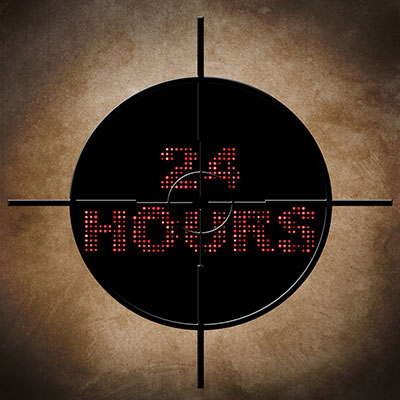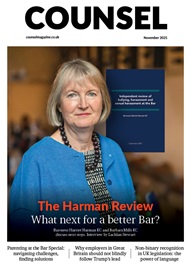*/

On 4 August 2011, Metropolitan Police officers shot dead Mark Duggan, prompting peaceful protests. Then violence broke out, first spreading through London, then to other cities. The ‘summer riots’ ended on 10 August. The result was almost 4,000 arrests.
Fast-track justice measures imposed to deal with the sheer number of suspects – and to deal with them swiftly – saw those apprehended charged, prosecuted and sentenced, within the space of 24 hours (in June 2011 the average time between offence and completion of a case in the magistrates’ courts was 6.2 weeks). To implement these measures, magistrates’ courts sat overnight and throughout weekends.
By 12 October 2011 – two days after the riots ended – 1,984 suspects had faced prosecution. Of them, 686 had been found guilty, and 71 acquitted or their cases dismissed. Of the 551 sentences handed out, 331 had been immediate custody, with the average custodial sentence being 12.5 months. Of offenders sentenced for public order offences, 42% received custodial sentences. In comparison, only 12% of public order offenders received custodial sentences in 2010. The Court of Appeal subsequently upheld sentences that went outside the sentencing guidelines (R v Blackshaw and others [2011] EWCA Crim 2312).
Nine years later, on 12 June 2020, Home Secretary Priti Patel and Justice Secretary Robert Buckland reportedly signalled the potential return of ‘24-hour justice’ ahead of planned (but eventually called off in London) Black Lives Matter (BLM) protests over the weekend of 13-14 June, putting urban magistrates’ courts on notice that they may be called on to operate extended hours. Offences which might be prosecuted overnight include vandalism, criminal damage, and assaulting police officers. Ministers have also vowed to increase punishments for offenders, including calls within government for a new offence of desecrating war memorials, carrying a maximum sentence of 10 years.
In 2011, fast track justice was an unprecedented response to an unprecedented level of mass violence. Even then, it was considered problematic. But the current BLM protests have been overwhelmingly peaceful. As at 12 June, 135 arrests had been made, out of 137,000 participants across two weeks of protests. There were a handful of arrests at BLM demonstrations across the country on 13 June. Over 100 arrests were made on 13 June when far-right demonstrators gathered to ‘protect’ the statue of Winston Churchill in London (often targeted by demonstrators).
No further announcements have been made, and it remains to be seen whether the fast track system will be implemented.
Many criminal lawyers will baulk at the idea of rushing through a process which may result in the loss of a person’s liberty in a mere 24 hours, particularly if it involves what can be complex areas of law, protest and public order, and heavy sentences. Rushed proceedings are anathema to the rules and procedures designed to safeguard the fairness of a prosecution.
No suggestions have been made (beyond extended court hours) as to how this process will be accommodated by a criminal justice system (CJS) already set to finally break under the increased backlog of cases resulting from the coronavirus shutdown. Appeals stemming from miscarriages of justice (the potential for which is signalled by reports that policing of BLM protests has been unlawful) will only increase pressure.
In a plural and democratic society, the law jealously protects fundamental rights to freedom of expression, assembly and association, including through protest. The 24-hour justice process risks disproportionately undermining those rights via a threat of criminalisation along depressingly familiar lines: swift imprisonment and an increased sentence.
The CJS is already unrepresentative of minorities. Black, Asian and Minority Ethnic people are disproportionately and more harshly affected by it (and continue to be, despite recommendations for reform, such as the Lammy Report, which remain unimplemented). Consequent mistrust of the CJS will be compounded by a system of ‘rushed justice’ which is seen to target black people. The CJS should be working to remedy systemic racism within itself, not exacerbate it.
Many will see this as a knee-jerk reaction to a situation informed more by political expediency than a desire to see justice served and fairness ensured. Worse yet, a deliberate attempt to draw a parallel between violent rioting and peaceful demonstration by people – black people – highlighting a desperately important issue.
Published on 27 July 2020

On 4 August 2011, Metropolitan Police officers shot dead Mark Duggan, prompting peaceful protests. Then violence broke out, first spreading through London, then to other cities. The ‘summer riots’ ended on 10 August. The result was almost 4,000 arrests.
Fast-track justice measures imposed to deal with the sheer number of suspects – and to deal with them swiftly – saw those apprehended charged, prosecuted and sentenced, within the space of 24 hours (in June 2011 the average time between offence and completion of a case in the magistrates’ courts was 6.2 weeks). To implement these measures, magistrates’ courts sat overnight and throughout weekends.
By 12 October 2011 – two days after the riots ended – 1,984 suspects had faced prosecution. Of them, 686 had been found guilty, and 71 acquitted or their cases dismissed. Of the 551 sentences handed out, 331 had been immediate custody, with the average custodial sentence being 12.5 months. Of offenders sentenced for public order offences, 42% received custodial sentences. In comparison, only 12% of public order offenders received custodial sentences in 2010. The Court of Appeal subsequently upheld sentences that went outside the sentencing guidelines (R v Blackshaw and others [2011] EWCA Crim 2312).
Nine years later, on 12 June 2020, Home Secretary Priti Patel and Justice Secretary Robert Buckland reportedly signalled the potential return of ‘24-hour justice’ ahead of planned (but eventually called off in London) Black Lives Matter (BLM) protests over the weekend of 13-14 June, putting urban magistrates’ courts on notice that they may be called on to operate extended hours. Offences which might be prosecuted overnight include vandalism, criminal damage, and assaulting police officers. Ministers have also vowed to increase punishments for offenders, including calls within government for a new offence of desecrating war memorials, carrying a maximum sentence of 10 years.
In 2011, fast track justice was an unprecedented response to an unprecedented level of mass violence. Even then, it was considered problematic. But the current BLM protests have been overwhelmingly peaceful. As at 12 June, 135 arrests had been made, out of 137,000 participants across two weeks of protests. There were a handful of arrests at BLM demonstrations across the country on 13 June. Over 100 arrests were made on 13 June when far-right demonstrators gathered to ‘protect’ the statue of Winston Churchill in London (often targeted by demonstrators).
No further announcements have been made, and it remains to be seen whether the fast track system will be implemented.
Many criminal lawyers will baulk at the idea of rushing through a process which may result in the loss of a person’s liberty in a mere 24 hours, particularly if it involves what can be complex areas of law, protest and public order, and heavy sentences. Rushed proceedings are anathema to the rules and procedures designed to safeguard the fairness of a prosecution.
No suggestions have been made (beyond extended court hours) as to how this process will be accommodated by a criminal justice system (CJS) already set to finally break under the increased backlog of cases resulting from the coronavirus shutdown. Appeals stemming from miscarriages of justice (the potential for which is signalled by reports that policing of BLM protests has been unlawful) will only increase pressure.
In a plural and democratic society, the law jealously protects fundamental rights to freedom of expression, assembly and association, including through protest. The 24-hour justice process risks disproportionately undermining those rights via a threat of criminalisation along depressingly familiar lines: swift imprisonment and an increased sentence.
The CJS is already unrepresentative of minorities. Black, Asian and Minority Ethnic people are disproportionately and more harshly affected by it (and continue to be, despite recommendations for reform, such as the Lammy Report, which remain unimplemented). Consequent mistrust of the CJS will be compounded by a system of ‘rushed justice’ which is seen to target black people. The CJS should be working to remedy systemic racism within itself, not exacerbate it.
Many will see this as a knee-jerk reaction to a situation informed more by political expediency than a desire to see justice served and fairness ensured. Worse yet, a deliberate attempt to draw a parallel between violent rioting and peaceful demonstration by people – black people – highlighting a desperately important issue.
Published on 27 July 2020


The Bar Council continues to call for investment for the justice system and represent the interests of our profession both at home and abroad
By Marie Law, Director of Toxicology at AlphaBiolabs
AlphaBiolabs has made a £500 donation to Sean’s Place, a men’s mental health charity based in Sefton, as part of its ongoing Giving Back initiative
Q&A with Tim Lynch of Jordan Lynch Private Finance
By Marie Law, Director of Toxicology at AlphaBiolabs
By Louise Crush of Westgate Wealth Management
Little has changed since Burns v Burns . Cohabiting couples deserve better than to be left on the blasted heath with the existing witch’s brew for another four decades, argues Christopher Stirling
Six months of court observation at the Old Bailey: APPEAL’s Dr Nisha Waller and Tehreem Sultan report their findings on prosecution practices under joint enterprise
The Amazonian artist’s first international solo exhibition is wholly relevant to current issues in social and environmental justice, says Stephen Cragg KC
Despite its prevalence, autism spectrum disorder remains poorly understood in the criminal justice system. Does Alex Henry’s joint enterprise conviction expose the need to audit prisons? asks Dr Felicity Gerry KC
It’s been five years since the groundbreaking QC competition in which six Black women barristers, including the 2025 Chair of the Bar, took silk. Yet today, the number of Black KCs remains ‘critically low’. Desirée Artesi talks to Baroness Scotland KC, Allison Munroe KC and Melanie Simpson KC about the critical success factors, barriers and ideas for embedding change